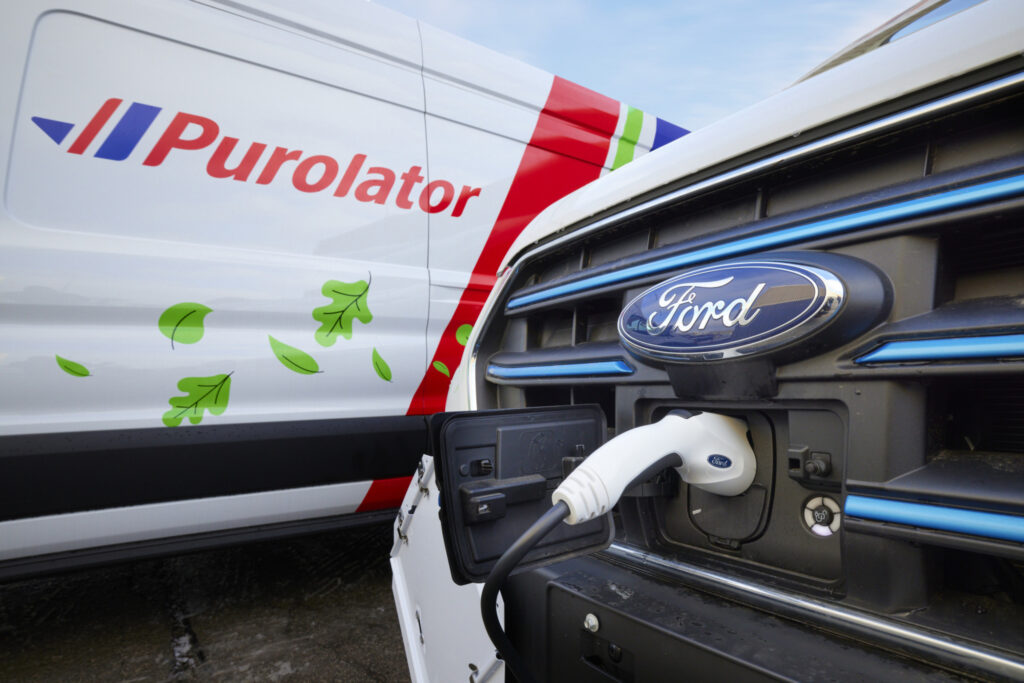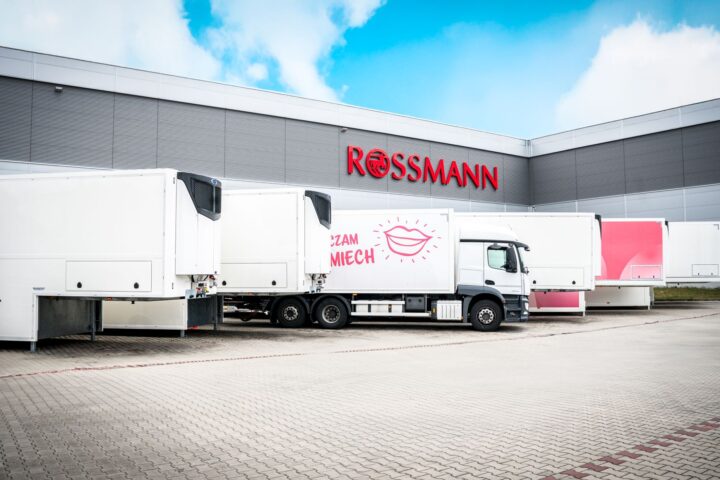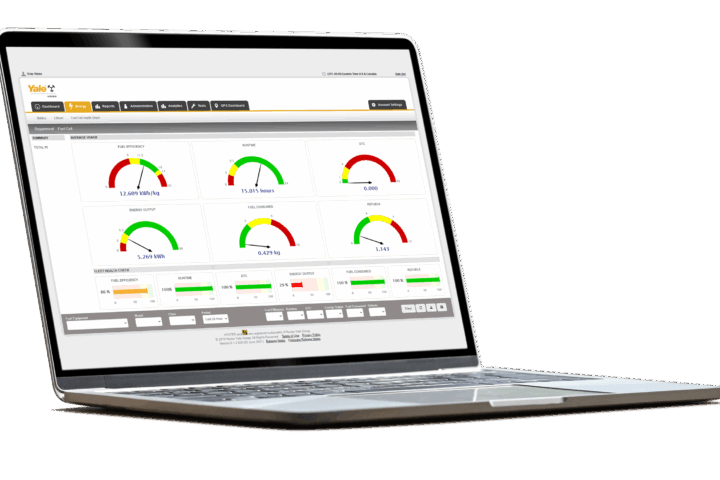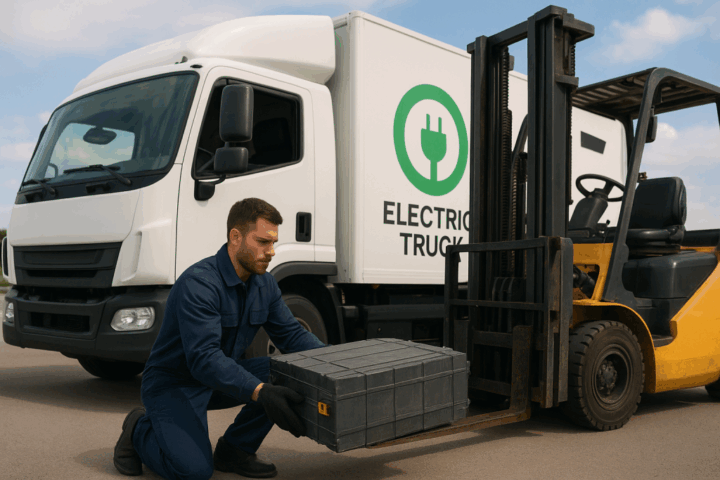Deploying charging infrastructure requires planning and partnership, according to a panel of speakers at the EV & Charging Expo.
Nim Takhtar, senior manager of fleet engineering with Purolator would know. The company has 275 chargers installed across a handful of sites across Canada.

“I’d say one of the main challenges we’ve faced in our deploying is around variability,” he said. “Every site is slightly different. Different challenges and different nuances.”
While fleets with multiple locations would love to standardize their charging infrastructure to the extent possible, it’s not always realistic, he acknowledged. Different dock heights and even overhead HVAC systems can require customized installations.
“You are trying to make your design as adaptable and scalable as possible, but you tend to find little iterations as you go forward,” he said.
When looking to electrify a terminal, Takhtar said it’s important to involve the front-line employees from early in the planning stage.
“Bring your operators — whether it be vehicle operators or depot operators — along for that journey,” he said. “They’re the ones who are going to drive adoption of this technology. Having them there up front as part of the design iterations is really beneficial, to have that smooth transition.”
Jean-Francois Veilleux, partner and transportation electrification lead with CIMA+, agreed that “every site is different.”
While standardization is the goal, “adding a different site with different realities is always a challenge, so we try to find the right balance between having the same equipment everywhere and having a tailored solution.”
Installing modular, scalable charging infrastructure allows fleets to grow their electric fleets more easily, and also avoid long lead times required for many systems. Fleets must engage their utility early and understand that it could take time to prep a site to support electric trucks.
“You can’t just come and put an application in and say, ‘I need 2 MW,’” said Jason Scultety, senior key account manager, fleet electrification with BC Hydro. “There’s a lot of engineering work, and work the customer has to do. There’s been a disconnect. The more prepared you are, the faster it goes for us.”
If time is of the essence, Guillaume Brossard, vice-president, commercial with Polara Energy, said there are temporary options that can be used to power electric vehicles until the permanent infrastructure is installed. This allows the fleet to begin enjoying the benefits of electrification more quickly.
Such “containerized” charging solutions have been helpful for Purolator, said Takhtar.
“It helped us learn a lot quicker. You can get these containers in and get into using EVs and into the day-to-day adoption of this technology a lot quicker,” he said. “It’s been very beneficial.”

Monetizing electrification
Fleets should also be mindful of ways to reduce the costs of installing charging infrastructure or how they can use their infrastructure to generate revenue when excess energy capacity is available.
Scultety said BC Hydro has an energy storage incentive program that will be rolled out to commercial fleets, which will encourage them to draw and store power during off-peak times, helping the utility to manage grid peaks.
Brossard said such “demand response” programs offer a way to manage operations and reduce energy costs. Essentially, such programs will pay fleets to not charge their commercial trucks during certain circumstances, such as when there’s a heat – or cold –spell and energy demand is high. Fleets that participate can always opt to charge even during such periods, but those who change their charging habits receive a rebate.
“If you reduce your consumption in these times, because it’s going to be -25C in upcoming days, you get back a certain amount of money,” Brossard explained. Last winter in Quebec, there were 12-13 such opportunities in which fleets that charged during off-peak periods received rebates, he added. Fleets are given advance warning and the transaction is managed by the charging management system.
Another opportunity for revenue generation is vehicle-to-grid charging, in which a fleet can put unused energy back into the grid and be paid for doing so. Also known as bidirectional charging, “it’s happening now,” said Scultety. “BC Hydro is investing in all those different types of technologies.”
He said the utility is currently seeking fleets to pilot V2G bidirectional charging. And then there’s the collection of carbon credits, which can also provide financial incentives for electric fleets.
While Purolator is in the early stages of exploring such incentive programs, Takhtar advised against building them into your business case.
“It’s important not to base your business case off these avenues,” he said. “Use these as bonuses. Learn about your operations, learn to turn this concept into reality and make sure it works for your business before tapping into these optimization strategies. Look at the business case without these items first.”
Mistakes to avoid
Asked what common missteps fleets should look to avoid, Takhtar said, “one small error we’ve seen and experienced is not understanding vehicle-to-charger compatibility.”
The vehicle and charger must be able to communicate well in order to provide seamless service. “Do your research and get into the technicalities and understand if compatibility is going to be there,” he insisted.
Overbuilding charging infrastructure can also be a mistake, panelists noted, stressing the advantage of modular, scalable charging systems that can be cost-effectively expanded over time to meet growing demand.
A good charging management system is crucial, said Brossard, suggesting he’s seen fleets reduce their total charging costs by 50-60% by utilizing a good system. Also, communicate with local utilities to ensure your fleet is taking advantage of all available incentive programs, he suggested.
And Veilleux added a good charging management system will reduce the cost of the equipment needed and enable a smaller footprint for transformers. “Footprint in facilities is usually an issue,” he said. “The more you scale down, the easier it is to implement.”












